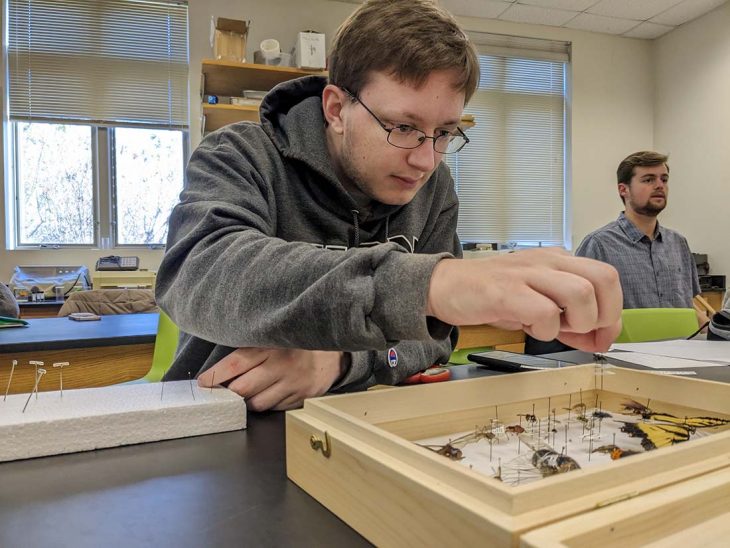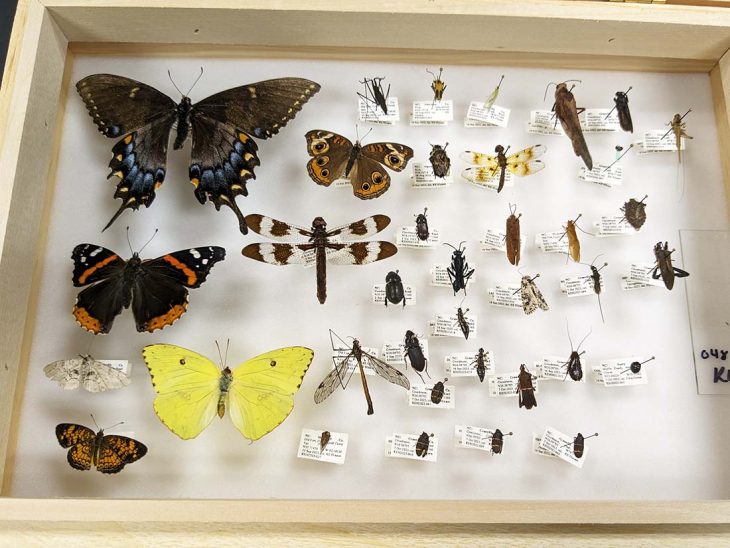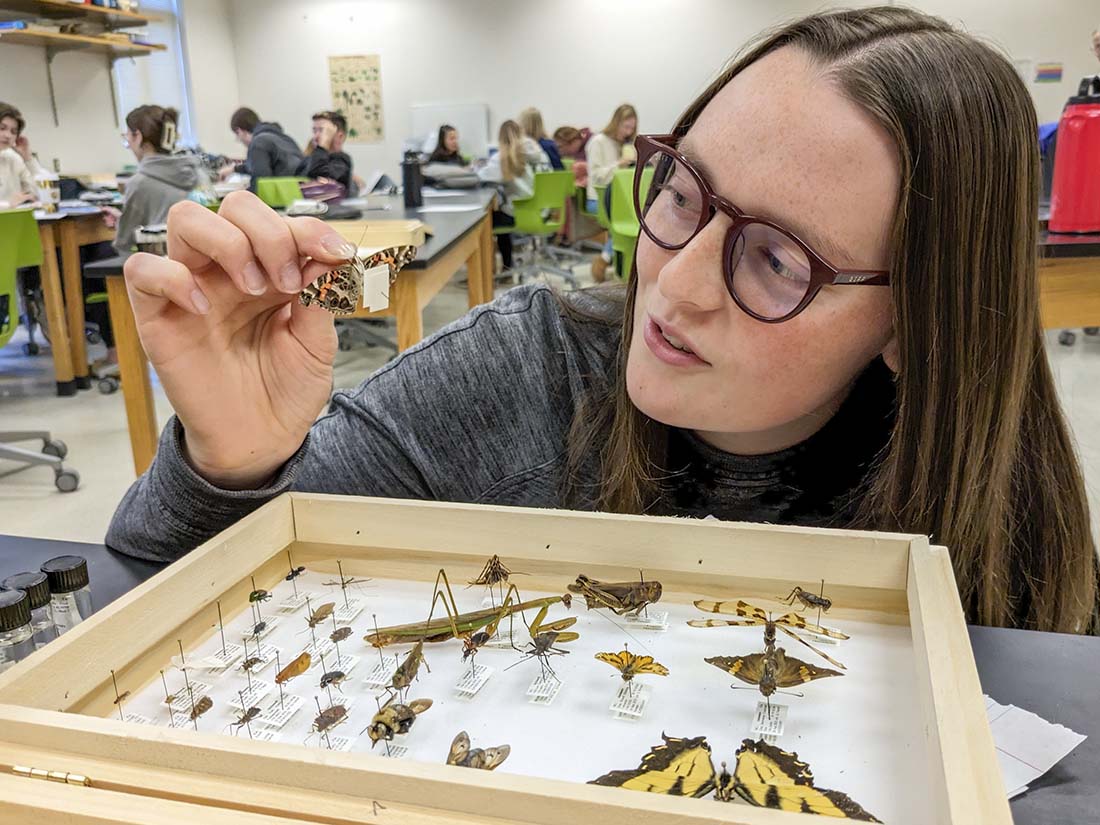Students in Associate Professor Jen Hamel's Insect Biology course spent the fall semester collecting, identifying and labeling an array of insects that will become part of Elon's permanent collection
Kyla Farrell ’25 didn’t begin the fall semester expecting to be called “bug girl,” but she carries the nickname like a badge of honor.
Her enthusiasm for a semester-long project to collect and identify insects in the Insect Biology course taught by Associate Professor of Biology Jen Hamel led friends to tag her with the moniker. Hesitant at first — “I was never a huge fan of insects” — she quickly warmed to the thrill of the hunt.

“After a couple weeks, I just started catching bugs everywhere. All my roommates started calling me ‘bug girl’ and making fun of me,” Farrell said, laughing. Working with the basketball team, if people saw a bug flying around during practices, play would stop and Farrell was summoned.
“They’d freak out and call me in to get a jar. It was fun and I didn’t expect to enjoy this as much as I did.”
Along with Farrell, the 14 students in the upper-level course — the first time it’s been offered at Elon since at least the 1980s — spent some of their class time and much of their free time searching for insects on Elon’s campus and on a weekend trip to Pisgah National Forest near Asheville. Their mission was to collect 40 specimens, 22 of which had to be from specific orders. For example, the various types of flies are members of the order Diptera, which are then distinguished by family, genus and species.
“It was basically like a giant game of Pokémon,” Hamel said.
Bug by bug, critter by critter, they each filled wooden Schmitt boxes with pinned and labeled insects. Those labels identify each insect by family — and when possible genus and species — along with the date and location where it was found and the name of who found it.

Their collections will become part of Elon’s permanent insect collection, which is housed in McMichael Science Center.
The course, which Hamel plans to offer every two years, centers on entomology and includes taxonomy, physiology, ecology, evolution, and behavior.
“It was motivating for them to know that their collections would become part of the Department of Biology and Elon’s teaching resources,” Hamel said. “To have this ongoing activity through the semester that is searching, interacting with, collecting and identifying living organisms, was really helpful for them.”
Farrell isn’t the only one proud of her collection.
Tyler Myers ’24, of Naples, Florida, found some of his specimens at the Audobon Corkscrew Swamp Sanctuary in the Everglades (after getting permission from the sanctuary’s staff, of course).

“It’s nice just to have this solid deliverable to show that I caught, identified and labelled this collection of insects,” Myers said. “I caught eight or nine butterflies for this collection. That’s pretty cool and more than just an exam grade.”
Along with other collections — including an herbarium and wildlife slides — Elon’s insect collection will soon be more prominently displayed and available for research. A third phase of the McMichael Science Center renovations will be completed this summer, creating a space for a natural history collection that will be a resource for faculty and students going forward.



